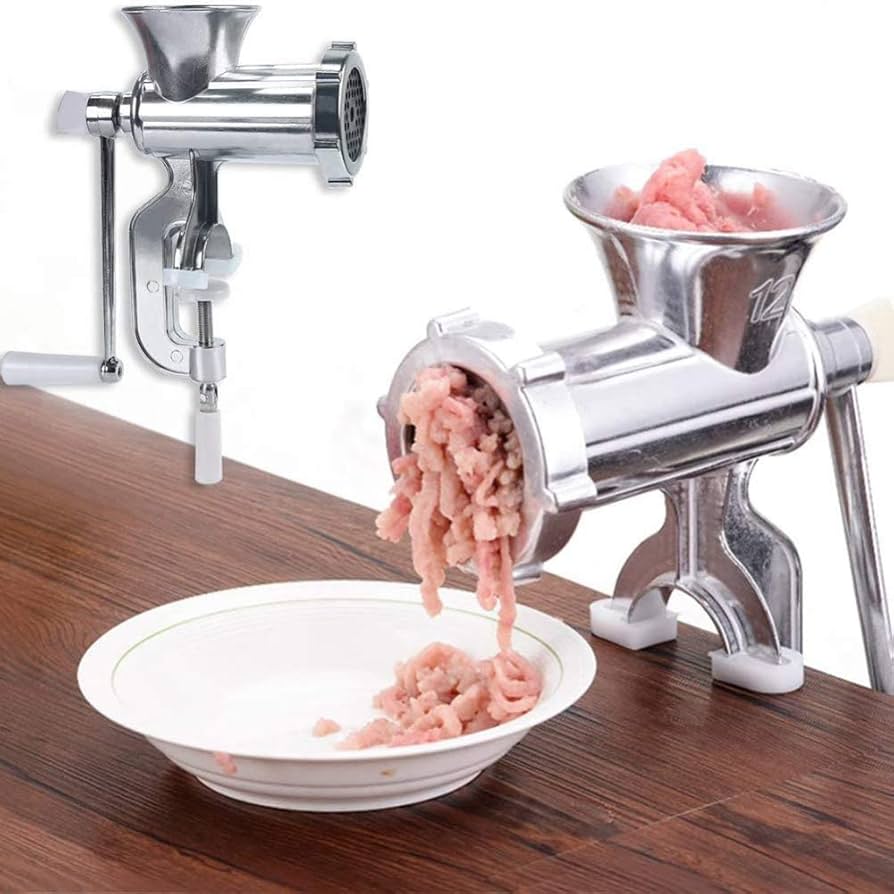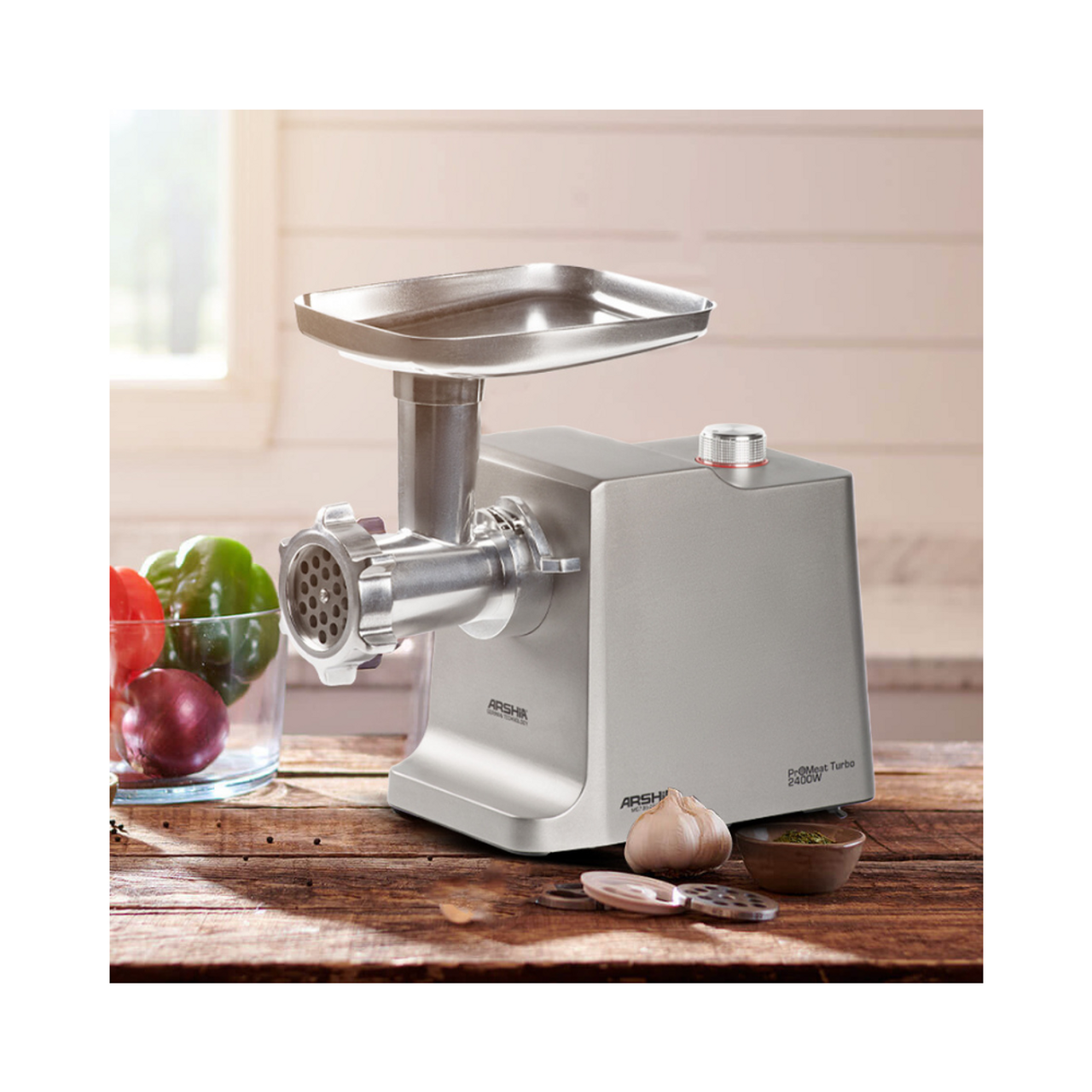Ever found yourself staring at a wall of kitchen gadgets, completely baffled by the numbers? You’re not alone. When it comes to meat grinders, the specs can feel like a secret code. You just want to make amazing burgers, not earn a degree in mechanical engineering. That brings us to one of the most common questions we hear: What Is A Number 8 Vs Number 12 Grinder, and which one should I actually buy? It’s a question that can leave even seasoned home cooks scratching their heads. But don’t worry, we’re about to break it all down in plain English, so you can make a choice with confidence and get back to what really matters: crafting delicious, freshly ground meat.
What Do Those Grinder Numbers Actually Mean?
First things first, let’s demystify the numbers. The “#8” and “#12” aren’t random model numbers. They are a standardized sizing system used across the industry, and they refer to the diameter of the grinder head, specifically the grinding plates and the output nozzle.
Think of it like the diameter of a garden hose—a wider hose lets more water through faster. It’s the same principle here. A larger number means a larger grinder head, a wider throat (where you feed the meat in), and bigger grinding plates. This directly translates to how much meat you can process and how quickly you can do it.
- A #8 Grinder has grinding plates that are approximately 2.5 inches (63.5 mm) in diameter.
- A #12 Grinder has grinding plates that are approximately 2.75 inches (69.85 mm) in diameter.
While that quarter-inch difference might not sound like much, it creates a significant impact on performance, speed, and the types of jobs each machine is best suited for.
The #8 Meat Grinder: The Home Kitchen Hero
Let’s get personal with the #8. I like to think of the #8 grinder as the undisputed champion of the modern home kitchen. It’s the perfect sweet spot for most families and culinary enthusiasts who want to elevate their cooking without turning their countertop into a commercial butchery.
Key Characteristics of a #8 Grinder
- Compact Footprint: They are generally smaller and lighter, making them easy to store in a cabinet or pantry.
- Sufficient Power: Typically powered by motors ranging from 300 to 575 watts, which is plenty of muscle for weekly burger nights, small batches of breakfast sausage, or grinding up chicken for meatballs.
- Ideal Capacity for Home Use: You can expect to grind around 2-4 pounds of meat per minute. For a family of four, that’s more than fast enough.
Who is the #8 Grinder Perfect For?
You’ll fall in love with a #8 grinder if you are:
- The Weekend Chef: You grind meat a few times a month for special recipes.
- The Health-Conscious Parent: You want to make fresh, preservative-free ground meat for your family.
- The Small-Space Dweller: You have a smaller kitchen and need appliances that don’t hog all the counter space.
- The Budget-Savvy Buyer: #8 models are generally more affordable, offering a fantastic entry point into the world of home grinding.
The #12 Meat Grinder: Stepping Up Your Grinding Game
If the #8 is the home hero, the #12 is the pro-am powerhouse. This is the machine you get when your hobby starts getting serious. It’s the bridge between casual home use and light commercial-level performance, built for bigger jobs and bigger ambitions.
Key Characteristics of a #12 Grinder
- Increased Throughput: With its larger head and wider throat, a #12 can chew through meat noticeably faster, often processing 4-6 pounds per minute or more.
- More Powerful Motor: These grinders usually start at 575 watts and can go up to 1 HP (horsepower) or more. This extra power means they are less likely to get bogged down by tougher cuts or small amounts of sinew.
- Heavier-Duty Construction: They are typically built with more metal components and are heavier, which adds to their stability during operation.
Who Should Choose a #12 Grinder?
A #12 grinder is your best bet if you are:
- The Hunter: Processing a whole deer or other large game is significantly faster and easier with a #12.
- The Homesteader or Farmer: You process your own livestock or make large batches of pet food.
- The Serious Sausage Maker: If you’re making 25-pound batches of sausage at a time, the speed of a #12 is a lifesaver.
- The “Go Big or Go Home” Cook: You value efficiency and power and don’t want to be limited by your equipment.
Head-to-Head: Number 8 vs Number 12 Grinder Showdown
To make it even clearer, let’s put them side-by-side in a simple chart.
| Feature | #8 Meat Grinder | #12 Meat Grinder |
|---|---|---|
| Plate Diameter | ~2.5 inches | ~2.75 inches |
| Throat Opening | Smaller | Larger, less prep needed |
| Typical Motor Power | 300 – 575 Watts | 575 Watts – 1 HP+ |
| Grinding Capacity | 2-4 lbs/minute | 4-6+ lbs/minute |
| Best For | Weekly home use, small batches | Hunters, large batches, frequent use |
| Size & Weight | Lighter, more compact | Heavier, larger footprint |
| Price Point | More affordable | Higher initial investment |
Expert Tip from Appliance Specialist Sarah Jenkins: “The biggest mistake people make is buying a grinder that’s too small for their big-picture plans. If you’re a hunter, don’t even consider anything less than a #12. The time you save processing an animal will be worth every extra dollar spent. For everyone else, a quality #8 is a fantastic and versatile tool.”
Beyond the Numbers: Other Factors to Consider
The decision between a number 8 vs number 12 grinder isn’t just about size. Here are a few other crucial things to keep in mind.
Motor Power: Wattage vs. Horsepower
Don’t get too hung up on watts. While it’s a useful indicator, horsepower (HP) is the true measure of a motor’s grinding force. A 0.75 HP motor will almost always outperform a 575-watt motor, even if the wattage sounds high. For tough jobs, look at the HP rating.
Build Materials: Stainless Steel is King
Look for grinders with stainless steel components, especially the auger, plates, and blade. They are durable, easy to sanitize, and won’t rust. A grinder is an investment, so prioritize materials that will last.
Attachments and Accessories
Both #8 and #12 grinders often come with a range of attachments. Sausage stuffing tubes are common, but some models can be fitted with pasta makers, vegetable strainers, or jerky slicers. Consider what else you might want to do with your machine.
Frequently Asked Questions (FAQ)
Q: Can I use #12 grinding plates on a #8 grinder?
A: No, you cannot. The grinding plates are not interchangeable between sizes. The head assembly of a #12 grinder is physically larger to accommodate the larger 2.75-inch plates. Always buy accessories that match your grinder’s size number.
Q: Is a #8 grinder powerful enough to process a deer?
A: It can do it, but it will be a slow and laborious process. You’ll need to cut the meat into smaller chunks to fit the throat, and the motor will be working at its limit. For game processing, a #12 is strongly recommended for its speed and power.
Q: What is the typical price difference between a #8 and a #12 grinder?
A: A #12 grinder is typically 30-50% more expensive than a comparable #8 model from the same brand. This price difference reflects the larger size, more powerful motor, and heavier-duty construction.
Q: How do I properly clean my meat grinder?
A: After use, run a few slices of bread through the grinder to push out any remaining meat. Then, disassemble all parts completely. Wash them in hot, soapy water (do not put them in the dishwasher unless the manual explicitly says it’s safe!), and dry them thoroughly immediately to prevent rust.
Q: Is a bigger grinder always better?
A: Not necessarily. If you’re only grinding a pound of beef for burgers once a month, a large #12 grinder will be overkill. It’s heavier to lug out, takes up more space, and has more parts to clean. The “better” grinder is the one that fits your actual needs.
The Final Verdict
At the end of the day, the choice in the number 8 vs number 12 grinder debate comes down to a simple, honest assessment of your needs. Don’t buy a V8 truck if all you do is drive to the local grocery store.
The #8 grinder is the perfect, capable, and affordable choice for the vast majority of home cooks. It will handle all your weekly grinding needs with ease and won’t take over your kitchen.
The #12 grinder is a worthwhile step up for the serious enthusiast—the hunter, the homesteader, the prolific sausage maker. It’s an investment in power, speed, and efficiency that pays off when you’re tackling large volumes.
Whichever you choose, you’re taking a fantastic step toward fresher, more flavorful food. Now, go pick the right tool for the job and get grinding! We’d love to hear which one you chose and what amazing creations you’re making with it.